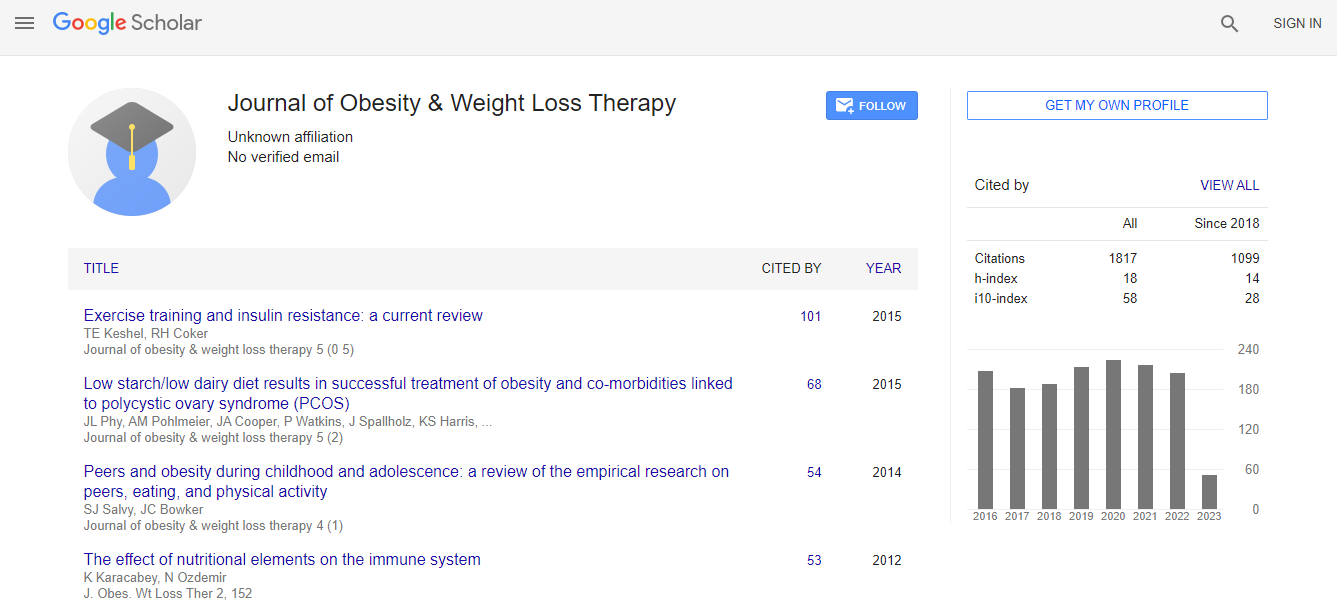Our Group organises 3000+ Global Events every year across USA, Europe & Asia with support from 1000 more scientific Societies and Publishes 700+ ������ Journals which contains over 50000 eminent personalities, reputed scientists as editorial board members.
������ Journals gaining more Readers and Citations
700 Journals and 15,000,000 Readers Each Journal is getting 25,000+ Readers
Citations : 2305
Indexed In
- Index Copernicus
- Google Scholar
- Open J Gate
- Genamics JournalSeek
- Centre for Agriculture and Biosciences International (CABI)
- RefSeek
- Hamdard University
- EBSCO A-Z
- OCLC- WorldCat
- SWB online catalog
- CABI full text
- Cab direct
- Publons
- Geneva Foundation for Medical Education and Research
- Euro Pub
- University of Bristol
- Pubmed
- ICMJE
Useful Links
Recommended Journals
Related Subjects
Share This Page
Correlation between body composition and walking capacity in severe obesity
7th Obesity & Endocrinology Specialists Congress
Gabriela Correia de Faria Santarem
University of S�?£o Paulo, Brazil
Posters & Accepted Abstracts: J Obes Weight Loss Ther
DOI:
Abstract
Background: Obesity is associated with mobility reduction due to mechanical factors and excessive body fat. The 6-minute walk test (6MWT) has been used to assess functional capacity in severe obesity. Objective: To determine the association of BMI, total and segmental body composition with distance walked (6MWD) during the 6-minute walk test (6MWT) according to gender and obesity grade. Setting: University of S�?£o Paulo Medical School, Brazil. Public Practice/Methods: Functional capacity was assessed by 6MWD and body composition (%) by bioelectrical impedance analysis in 90 patients. Results: The mean 6MWD was 514.9�?±50.3 m for both genders. The male group (M: 545.2�?±46.9 m) showed a 6MWD higher (p=0.002) than the female group (F: 505.6�?±47.9 m). The morbid obese group (MO: 524.7�?±44.0 m) also showed a 6MWD higher (p=0.014) than the super obese group (SO: 494.2�?±57.0 m). There was a positive relationship between 6MWD and fat free mass (FFM), FFM of upper limps (FFM_UL), trunk (FFM_TR) and lower limbs (FFM_LL). Female group presented a positive relationship between 6MWD and FFM, FFM_UL and FFM_LL and male group presented a positive relationship between 6MWD and FFM_TR. In morbid obese group, there was a positive relationship between 6MWD with FFM, FFM_UL, FFM_TR and FFM_LL. The super obese group presented a positive relationship between 6MWD with FFM, FFM_TR and FFM_LL. Conclusions: Total and segmental FFM is associated with a better walking capacity than BMI.Biography
Gabriela Correia de Faria Santarém completed her Master’s degree from the University of São Paulo Medical School and is a PhD student at the same university. She has published many articles related to obesity in renowned journals.
Email: gabrielafaria@hotmai.com

